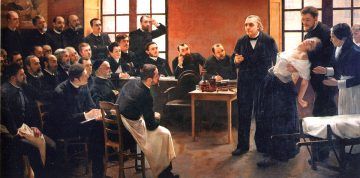
Not only was hysteria a disease of the body, but so was the susceptibility to hypnotic suggestion. In other words, according to Charcot, only true hysterics could attain the postures and maintain the poses of artificial hysteria. These could not be faked, so they had to be a pathological sign connected to real hysteria, even diagnostic of it. He called it le grand hypnotisme.
In 1882, Charcot presented this theory to the French Academy of Sciences as part of his bid for membership. The academy had already accepted his claim for the status of hysteria as a true disease on the strength of his reputation, although without much enthusiasm. They also signed off on his description of grand hypnotism, despite widespread skepticism. The idea had almost no support outside of Paris. According to Charcot’s critics, his four stages of hysteria and three-act demonstrations of hypnosis could be observed only at the Salpêtrière, or in patients who had lived there and had learned the choreography.
more here.
